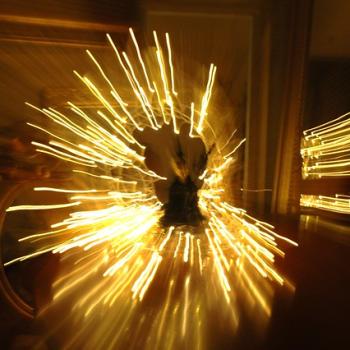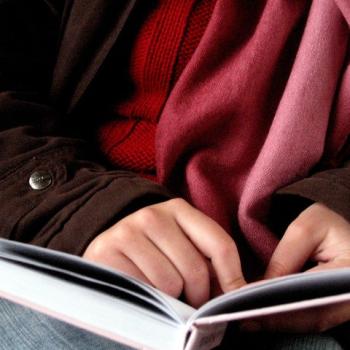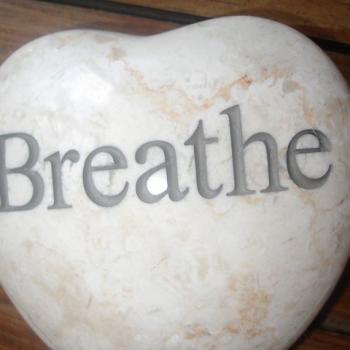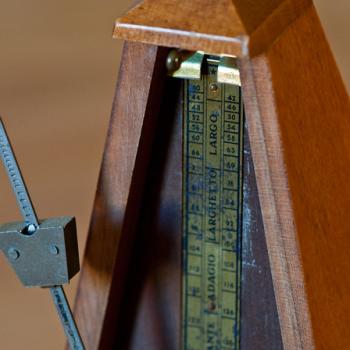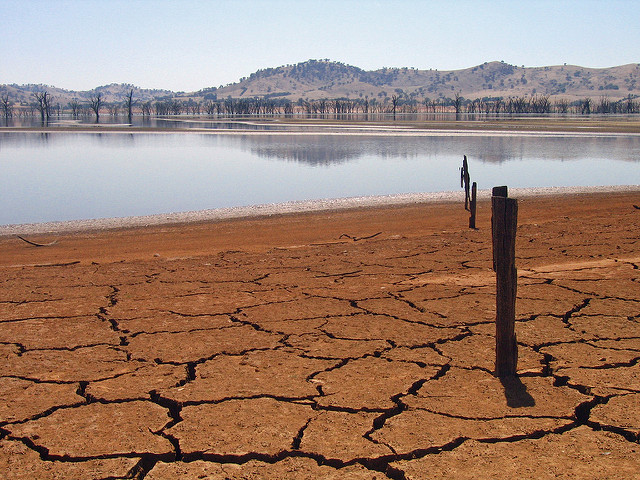
Our Stillness Drought
I live in a part of the world where drought is becoming a familiar aspect of life. It has rarely rained in Southern California during the last few years, even during the winter months.
Our prolonged absence of rain and water increases the opportunities for, and size of, wildfires.
We are changing the way we live our lives to adjust to our new drought situation. People are replacing the grass in their lawns with plants which tolerate drought conditions. Some of us are conserving water.
Dry weather, though, is not the only drought we are experiencing. Even more dramatic than the shortages of water in Southern California is our stillness drought.
We face an even more prolonged absence of stillness in our lives. Many of us go through entire weeks without a moment of stillness. We may not be able to remember the last time we experienced a period of refreshing stillness.
Our lives were not always like this. Some of us can remember a time before our stillness drought began. We may have grown up around people who took time for contemplation and reflection.
How did we get ourselves into this situation? Do we have attitudes or habits which make our stillness drought even more severe? What can we do to help relieve the stillness drought we are experiencing right now?
Many of us in California have learned there are things we can do to help. Even though the drought is the product of decisions and actions from outside our state, what we do can make a difference. Making it rain may be beyond our control, but we can live with a wiser relationship to water and help find solutions.
Fortunately for us, stillness is a renewable resource. We can help replenish our supply of stillness.
The Roots of Our Stillness Drought
What brought on our stillness drought? Are there causes we can recognize and understand?
Some people blame the Internet and cellphones and social media. They are convinced we have lost so much sacred stillness because we are so distracted by our electronic devices. There are people who believe our culture is being torn apart by the influence social media has on us.
I believe stillness was a challenge for us even before we had access to the Internet and electronic devices. There were people who felt television was a distraction before the Internet, and radio before television.
For me, the roots of our stillness drought are within us, not in anything electronic.
My experience tells me our minds are designed in a way which does not perceive stillness as helpful. We see the world as filled with potentially dangerous threats and our minds need to be vigilant to keep us safe.
Listening to sacred stillness could mean we miss some potentially devastating threat to us.
Our minds seem to be put together to solve problems and threats are challenging problems. Our minds experience contemplation and reflection as the absence of problems, and they generate problems to solve.
Some people have particular difficulty beginning contemplative practices. Their minds may be especially skilled at solving problems and reluctant to take any time away from problem solving.
They may not perceive a stillness drought as a problem which needs to be solved.
The first step in addressing our personal stillness drought is changing the way our minds understand its importance.
Our society’s stillness drought is rooted in our own personal droughts. Each of us can take steps which will help relieve our society’s overall stillness drought.
Stillness Drought Relief
The most effective way to relieve our own personal stillness drought is to start a practice of listening to sacred stillness. We can each set aside a specific period of time each day to spend in stillness.
Some of us are comfortable sitting still and listening to the stillness within us. Other people may prefer to take a walk or listen to stillness in a particular place.
One of the challenges we face is people are so thirsty in our society our stillness makes them curious. When we listen to stillness in a public place other people tend to want to interrupt and ask us questions.
If you are comfortable with people’s questions, places like parks or gardens can be great places to practice stillness.
I know people who seek out quiet places to practice stillness. They find empty places of worship during the week in their neighborhoods and slip in to spend time listening.
It is also true, as we listen to sacred stillness within us, the places we listen do not need to be silent. Even places where other people gather can allow us to listen to sacred stillness.
We do not need to feel compelled to relieve our society’s entire stillness drought in one day or one week. As we begin to explore our own stillness resources we will begin to experience the power of the stillness within us.
We each play our own part to relieve the stillness drought in our own ways.
Healing the Wounds of Our Stillness Drought
We may find, as we continue a contemplative practice, the benefits go beyond restoring our supply of stillness.
Our stillness drought contributes to draining our ability to listen and pay attention. When we do not spend enough time in stillness and contemplation we begin to see every situation as an emergency. Our minds pull us into urgency and stress which does not help us.
Ironically, our focus on solving problems keeps us from seeing our deeper challenges.
When we live in a stillness drought life turns to dust and ashes. Our days are arid and filled with dry winds and brush fires.
We try to entertain and distract ourselves, but cannot find the nourishment for which we are thirsting.
Closing our eyes, we tilt our heads to the sky waiting for the first drops of water.
Where are we experiencing stillness drought today?
How will we help relieve our stillness drought this week?
[Image by Tim J Keegan]
Greg Richardson is a spiritual life mentor and leadership coach in Southern California. He is a recovering attorney and university professor, and a lay Oblate with New Camaldoli Hermitage near Big Sur, California. Greg’s website is StrategicMonk.com, and his email address is [email protected].



